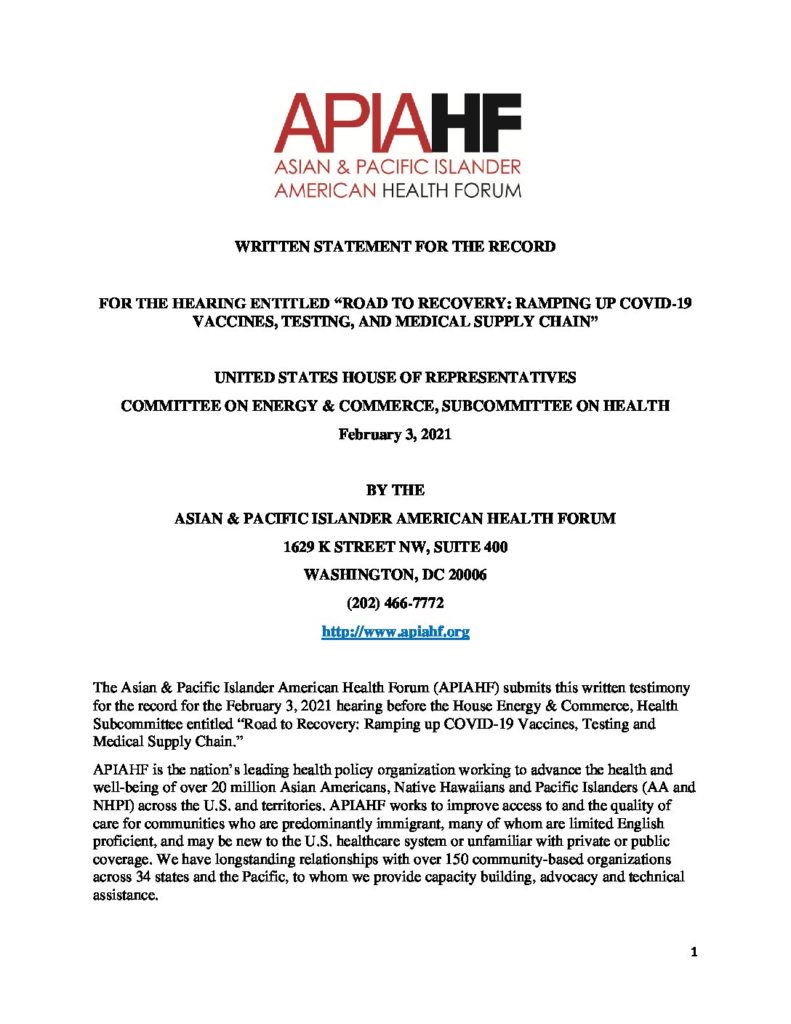The novel COVID-19 virus is a national crisis that demonstrates that public health has no boundaries. Yet the impact is being unevenly felt among communities of color who, due to a combination of structural, economic, social and environmental disparities and discrimination, are experiencing higher burdens associated with the pandemic. As a result, COVID-19 is disproportionately leading to severe illness and mortality within these communities.
We wish to emphasize that, in the face of narratives to the contrary, these communities facing disparities are in no way to blame. COVID-19 has exposed what advocates for health equity have known for decades, if not centuries: our history of racism and prejudice has led to serious health consequences that continue today. Or as put recently by journalist Zeeshan Aleem, “it’s not people of color driving up America’s casualties, but America that is driving up people of color’s casualties.”
According to the UCLA COVID-19 Racial Data Tracker, NHPIs are the most likely to have contracted COVID-19 in 2020.2 In at least 10 states, AAs have a case fatality rate that is disproportionately higher than the general population, while the same is true for NHPIs in 8 states. Recent estimates indicate a high burden of COVID-19 deaths among AAs, with almost 14,000 excess deaths, and AAs have the second-highest increase in deaths following Hispanic Americans.

